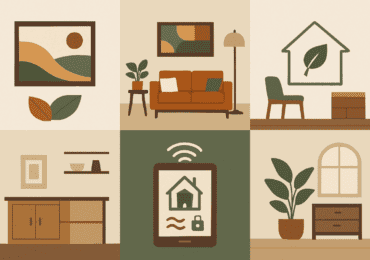Key Takeaways:
- Discover how design can transform living spaces into cultural expressions.
- Learn about key elements that blend functionality with aesthetic appeal.
- Understand the role of sustainability in modern interior design.
- Gain insights into how cultural influences continue to shape home designs.

The Intersection of Functionality and Artistry
Designing a home is an art that balances creativity and practicality, merging aesthetics with functionality. A thoughtfully chosen color scheme can energize or calm a space, influencing the well-being of its occupants. Aspen architects are known for combining simplicity and depth, crafting environments that reflect the characters and stories of those who live there. Their designs prioritize both utility and personal narrative, blending artistry with everyday needs.
Cultural Influences in Interior Design
Global cultures have a substantial effect on interior design, providing a diverse range of patterns, textures, and colors for modern dwellings. Elements like Moroccan tiles add exotic warmth, while Scandinavian design emphasizes clean lines and functionality. An article highlights how these cultural inspirations are reinterpreted in contemporary settings, enriching spaces with stories, history, and meaning and transforming houses into globally inspired homes.
The Role of Sustainability in Design
Today, design has become a necessity, driven by increasing environmental concerns. Eco-friendly materials like reclaimed wood, low-impact flooring, and energy-efficient systems are in demand for their sustainability and aesthetic appeal. For example, bamboo flooring combines style with sustainability, allowing homeowners to make eco-conscious choices without compromising beauty. A BBC article on sustainable home design highlights how these elements not only reduce carbon footprints but also enhance design aesthetics, proving that sustainability can be both elegant and innovative.
Crafting Personalized Living Spaces
Personalization is key when it comes to making a house feel like a home. Each space should reflect the personality and lifestyle of its inhabitants. A bespoke approach to design ensures that living spaces meet individual tastes and needs. It could mean custom-built furniture tailored to fit specific spaces or incorporating personal memorabilia into the decor to evoke cherished memories.
Custom cabinetry, for instance, offers not just storage solutions but also opportunities for craftsmanship and self-expression. It allows homeowners to blend practicality with aesthetic preferences, ensuring the functionality of the space harmonizes with decorative aspirations.
Technology in Modern Living Spaces
The integration of technology into home design has revolutionized living spaces in remarkable ways. Smart home technology serves as a bridge between convenience and cutting-edge innovation, offering features that cater to a lifestyle of ease and comfort. From automated systems technology, climate, and security to advances in kitchen appliances, technology continuously shapes how our spaces function.
This amalgamation transforms homes into futuristic environments where technology helps maximize efficiency without overshadowing aesthetics. The result is a living space that is as smart as it is stylish, appealing to the tech-savvy modern homeowner.
Interior Design Trends to Watch
Interior design continually evolves, reflecting cultural shifts. A prominent trend is minimalism, which prioritizes simplicity, functionality, and decluttering, embodying the idea that less is more. Another growing trend is biophilic design, which integrates natural elements like greenery, natural light, and organic materials, creating a calming escape from urban life.
Conclusion: Curating a Space That Reflects Your Story
Designing a living space that reflects your story goes beyond aesthetics; it’s a personal expression of who you are. By incorporating cultural heritage and personal experiences and embracing technology and sustainability, home design becomes a narrative that resonates with your lifestyle and aspirations. As you begin your design journey, pull inspiration from a variety of sources to build a house that fulfills your requirements while telling your unique narrative.